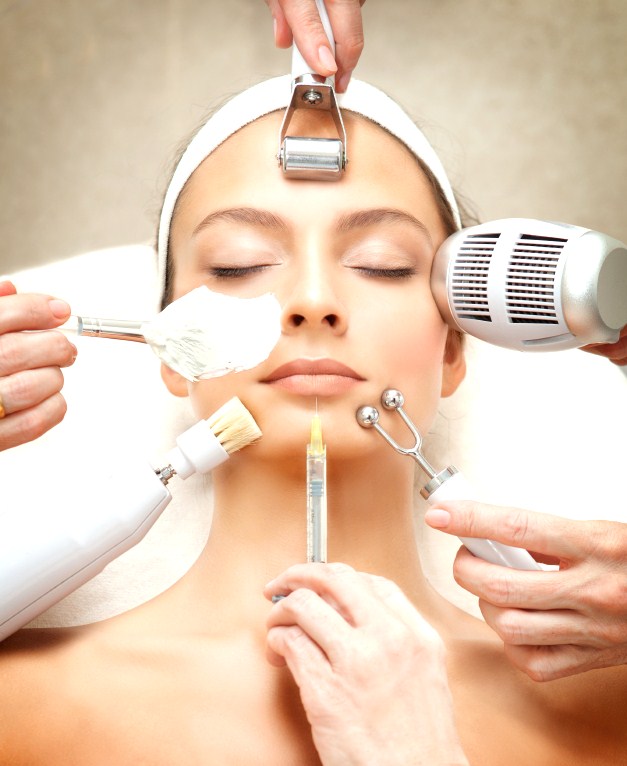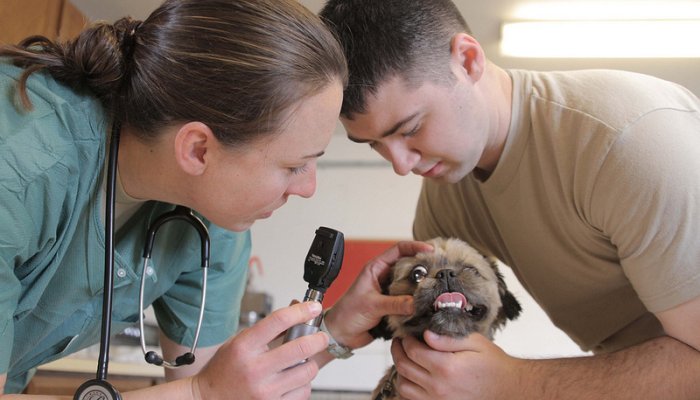If you consider becoming a licensed esthetician, you probably wonder what training options are there for you, how much they cost, and what skills you are required to have in order to perform well at your job. Before providing information on how to become an esthetician and what the enrollment requirements are, let’s see what estheticians do and what skin care is all about.
What is Esthetics and What Does an Esthetician Do?
Esthetics is a field of business focusing on facial and body treatments meant to beauty skin. If you google esthetics you will probably find it spelled aesthetics, which is also correct. Esthetics is a fast-growing field which goes hand in hand with the cosmetics industry. More and more people are interested in having a nicer and healthier appearance, which makes esthetics a more and more profitable area of activity.
Working in the beauty industry seems to be quite exciting at a first glance. But what do estheticians actually do? Estheticians are skin care professionals who perform different kinds of treatments including waxing, hair removal, exfoliating, aromatherapy, reflexology, makeup, peels, polishes, body wraps and massages. Treatments like aromatherapy and reflexology, for example, are considered specialized areas of esthetics and require advanced training.
Mainly divided into ‘medical’ and ‘non-medical’, estheticians choose from a variety of career paths. They work in a variety of environments from medical offices and clinics to luxurious spas and salons. They can be skin care specialists, or become master estheticians, spa managers and even esthetician school instructors. Whether you choose to work in a clinic, or in a cosmetics company, as a salesperson or product line developer, there are many jobs waiting for you. Some of them, though, require a master in esthetics. Let’s find out everything you need in order to become a skin care specialist.
How to Become an Esthetician?
If you think a job in esthetics is the right career path for you, we are here to provide you with all tedious but absolutely necessary information on how to get there.
In order to become a skin care professional, there are certain educational and licensing requirements.
First, you need to graduate high school and apply to an accredited esthetician school. After completing a cosmetology program, all estheticians are required to pass a written and practical exam and get licensed in the state of practice. All states have specific licensure requirements and state boards that ultimately certify you as an esthetician. Some states, though, can take into consideration apprenticeships in salons and spas instead of an esthetics training program.
Education, Training and Licensing Requirements
Esthetician schools offer classes on how to analyze, treat and beautify skin in authorized settings. The courses you can choose may vary from state to state and industry to industry, but the general curriculum includes 6 to 12 months courses on hair removal, nail and skin care, as well as on makeup applications and more specialized esthetics topics. Estheticians also need to be able to identify skin conditions and disorders so as to refer their clients to medical staff for the right treatment.
Here are some of your options as regards esthetician courses you can find across the US:
- Cleansing, Toning & Massaging
- Makeup Application
- Hair Removal & Waxing
- Body Treatments, Wraps, Aromatherapy
- Reflexology
- Cosmetic Sciences, Chemistry & Structure
- Skin Conditions & Disorders
- Marketing, Sales & Salon Management
- Safety, Sanitation & Sterilization
- Human Physiology & Anatomy
- Hair & Hair Growth Cycles
- Elements That Affect Skin
- Exfoliation Methods & Best Practices
- Creating & Applying Facial Masks
- Safe Extraction Performance
- Facial Massage, Detoxification & Lymphatic Drainage
Not only cosmetology programs, but also licensing requirement vary depending on states of practice. If you are considering working in Oregon, for example, 250 hours of training would be enough for you to take the final exam. In a state like Alabama, however, you are required to take 1500 hours of training to get licensed. Training hours also vary according to specialties. There are, for instance, waxing licenses that would take you only up to 75 hours of training, while highly specialized courses such as medical esthetics can require more than 1,000 trainings hours.
What you can do in order to find out specific training requirements is to check each state’s licensing and even contact the boards or your state licensing department. All requirements and resources can be found on the National Cosmetology Association’s website.
How Much Do Esthetics Trainings cost?
As trainings vary from school to school and state to state, the cost of cosmetology programs depend on several factors like number of hours, courses, location of school. The geographical greatly affects the cost of training as metropolitan areas, for instance, offer a more expensive range of courses as compared to the suburbs or rural areas.
In average, you can spent between $3,000 and $5,000 on tuition fees, supplies and textbooks.
What is the Best Esthetician School to Choose?
Finding the ideal esthetician school depends on several aspects.
First, it has to be accredited by the National Accrediting Commission of Cosmetology Arts and Sciences (NACCAS).
Second, we recommend you to set your priorities. Would you like to work closer to your home or get a higher salary and choose a metropolitan area? Find out all about how much esthetician earn by state and industry from our post on esthetician salaries.
Find the esthetician school that best meets your needs by visiting Beauty Schools Directory.
How to Enroll in an Esthetician School?
All you need to do in order to enroll in an esthetician training program is having a high school diploma or GED. Of course, a future estheticians should have the desire to work with people and have the skills to make them feel comfortable.
Enrolling requirements may vary depending on state as well. Usually, beside your high school transcripts, you are required to fill in an application form, pass an entrance exam or interview, and pay a registration fee.
If you wish to upgrade your basic esthetician certification, you can also apply for further training. These trainings are often called ‘master’ esthetician licenses or advanced esthetician certifications. However, these are not available in all states.
Typically, advanced esthetician courses cover specialized esthetics and refers to classes on microdermabrasion, medical skin care or specific marketing courses. It is recommended to take up such trainings as they enhance your chance for a higher salary.
What are the Skills Required?
According to the United States Bureau of Labor Statistics, a well-prepared esthetician not only should have excellent customer service skills, but also a good stamina and even managerial skills.
Communication skills are highly important as one of the main tasks of an esthetician is to discuss clients’ skin problems and skin care needs, and advise them on what treatments they can choose in order to solve their skin issues.
Marketing and business skills are required for specialized estheticians who need to know about products and promote cosmetics. Marketing is also important for self-employed estheticians to promote themselves.
Tidiness is also essential when working in the field of esthetics. The safety, sterilization and cleanliness of equipment are required in all working settings.
We hope this article answered to how to become an esthetician. For any questions or comments, please leave us a message in the comment box below.
Image Source: 1













Leave a Reply